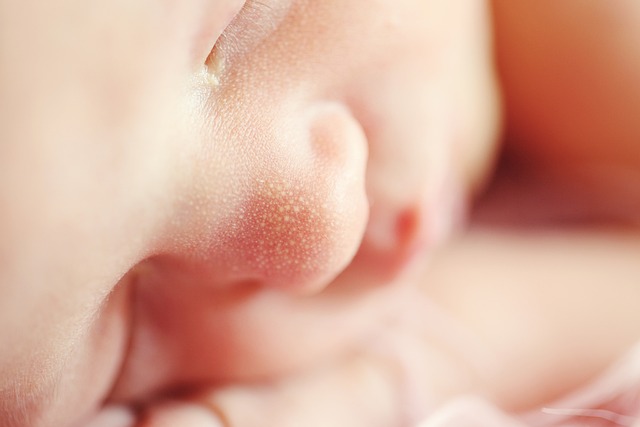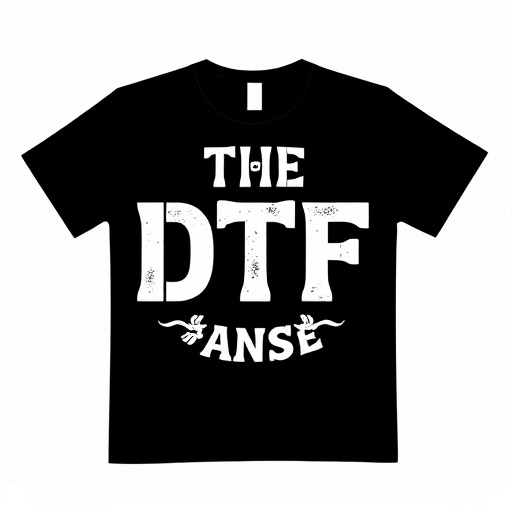DTF Transfers (Direct-to-Film) offer an advanced, durable method for preserving memories and artwork. Using cutting-edge technology, high-resolution images are scanned and printed layer by layer onto film, ensuring exceptional longevity, vibrancy, and protection against fading, washing, and wear. Ideal for photo gifts, art prints, or archival pieces, DTF Transfers safeguard cherished memories for generations to come with superior quality and durability, outperforming traditional printing methods in challenging conditions. Gentle care and high-quality materials further ensure the integrity of these transfers.
Discover the future of film preservation with long-lasting DTF (Direct to Film) transfers. This comprehensive guide explores how DTF technology offers unparalleled durability, resisting wear and wash damage. From understanding the process to practical application, we delve into the key features, materials, and design considerations that make DTF transfers a game-changer in archiving precious memories. Learn care tips and success stories, ensuring your films endure for generations.
- Understanding DTF Transfers: A Comprehensive Overview
- Key Features of Long-Lasting Film Transfers
- Materials and Techniques for Enhanced Durability
- Resistance to Washing: Care and Maintenance Tips
- Withstanding Wear and Tear: Design and Production Considerations
- Real-World Applications and Success Stories
Understanding DTF Transfers: A Comprehensive Overview

DTF Transfers, or Direct-to-Film Transfers, represent a revolutionary advancement in preserving and sharing precious memories. This modern technique involves transferring images and videos directly onto a durable film surface, creating a long-lasting, high-quality reproduction that’s resistant to fading, washing, and wear. The process starts with the original media – whether it’s a photograph or a vintage movie reel – being digitally scanned at high resolution to capture every intricate detail. This digital negative is then used to create a physical film positive, which is precisely exposed onto a special film base, layer by layer.
Unlike traditional printing methods that can lead to color shifts and degradation over time, DTF Transfers offer exceptional longevity and vibrancy. The final product feels like traditional film but with the added protection of modern technology. This makes DTF Transfers ideal for those looking to safeguard cherished memories, whether it’s a family heirloom, a vintage collection, or a personal memento. By choosing DTF Transfer services, folks can ensure their prized possessions are preserved for generations to come, in all their original glory.
Key Features of Long-Lasting Film Transfers

Long-lasting film transfers, often referred to as DTF (Direct to Film) Transfers, are a cutting-edge solution for preserving cherished memories and artwork. These transfers offer unparalleled durability and resistance to everyday wear and tear, ensuring that your films remain pristine for years to come. One of the key features is their superior quality, achieved through advanced printing technologies that capture every detail, from fine lines to vibrant colors, with remarkable accuracy.
Additionally, DTF Transfers are designed to withstand the rigors of washing and handling without compromising on visual integrity. This longevity is attributable to robust materials and precise production methods, guaranteeing that the transferred images remain sharp and unblemished even after extensive use. These transfers are a popular choice for creating durable photo gifts, art prints, or archival pieces, allowing individuals to savor their memories with confidence.
Materials and Techniques for Enhanced Durability

In the pursuit of long-lasting film transfers, the choice of materials and techniques plays a pivotal role in ensuring resilience against wear and tear. Digital Thermal Transfer (DTF) technology has emerged as a game-changer in this domain. DTF involves printing directly onto durable polyester or nylon films, creating an indelible bond that resists fading and cracking. This method is particularly effective for creating high-quality, long-lasting replicas of vintage films or precious memories.
The process incorporates advanced ink formulations and precise temperature control to ensure the transfer adheres firmly to the substrate. Additionally, coating the final print with protective layers further enhances durability. These coats not only shield the image from UV rays but also make the film more resistant to washing and environmental damage, ensuring that cherished films remain intact for generations to come.
Resistance to Washing: Care and Maintenance Tips

When it comes to preserving your cherished memories, a durable film transfer like DTF (Direct-to-Film) is essential. These transfers are designed with longevity in mind, ensuring your films withstand the test of time and even rigorous care routines. One of the key advantages is their resistance to washing processes—a common concern for many home enthusiasts.
To maintain the integrity of your DTF transfer, avoid aggressive cleaning methods. Gentle care is recommended; use mild detergent and warm water when needed. Always air dry and store in a cool, dry place to prevent any potential damage from moisture. Regular handling with clean fingers or soft cloths helps preserve the quality, ensuring your films remain pristine for years to come.
Withstanding Wear and Tear: Design and Production Considerations

In the realm of film preservation, creating long-lasting transfers that can withstand washing and wear is a delicate process. When it comes to DTF (Direct to Film) Transfers, several design and production considerations are crucial to ensure durability. The first step involves selecting high-quality materials, from the base film to the ink used for the transfer. This foundational strength ensures that the image remains intact even under repeated handling and exposure to various environments.
Furthermore, the printing process itself must be meticulously controlled. Precise temperature and pressure settings during printing play a significant role in fusing the image onto the substrate securely. Advanced techniques like using protective coatings and laminates add an extra layer of safeguard against wear and tear, making the DTF Transfer highly resistant to fading, chipping, or smudging over time. These considerations collectively contribute to preserving the film’s integrity for generations to come.
Real-World Applications and Success Stories

In real-world applications, DTF (Direct to Film) transfers have proven their mettle in various industries demanding high-quality, long-lasting imaging solutions. From outdoor advertising and event signage to museum exhibits and archival preservation, DTF technology offers unparalleled durability against environmental stressors such as sunlight exposure, moisture, and physical wear and tear. Success stories abound of DTF films outperforming traditional printing methods by lasting up to ten times longer, retaining vivid colors, and resisting fading even under the harshest conditions.
For instance, in the outdoor advertising sector, DTF transfers have revolutionized billboard and signage maintenance, reducing costs and increasing efficiency. Museums and art galleries have also adopted DTF technology for showcasing delicate artifacts and artwork, ensuring their preservation for future generations. These applications underscore the versatility and reliability of DTF transfers as a go-to solution for demanding environments where image quality and longevity are paramount.














